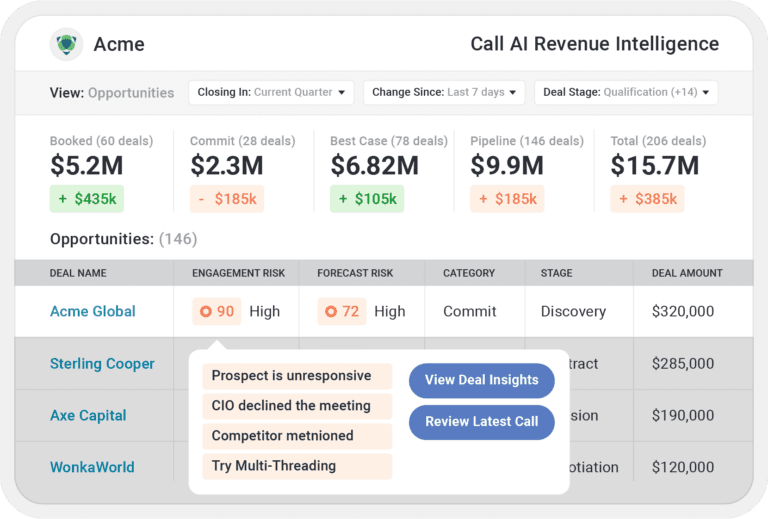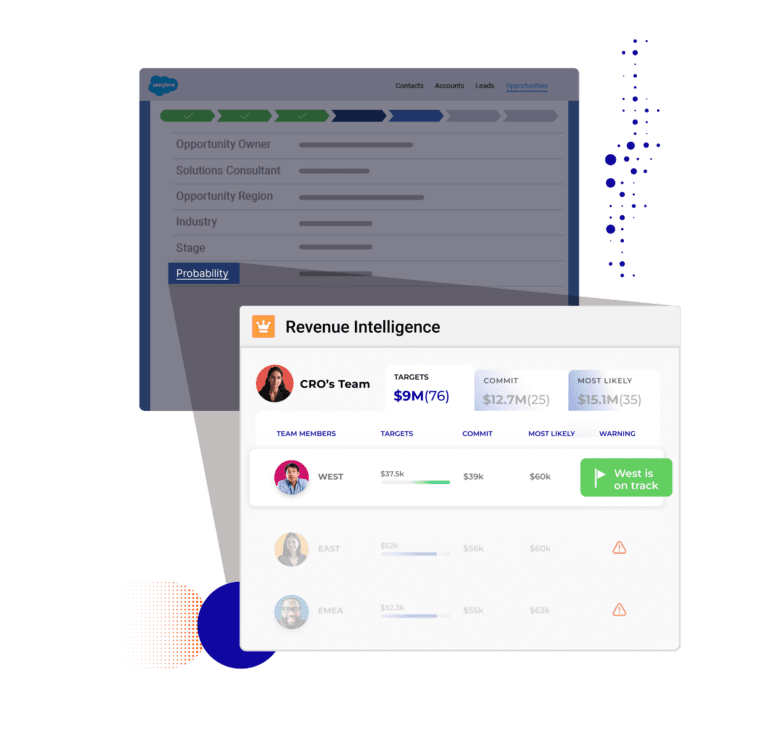We wanted to talk to one of our sellers to find out how they use Mindtickle daily. Our very own Jacob Cawsey – a former professional soccer player – sat down with us to talk about why conversation intelligence is similar to watching game tape, how he learns from top sellers, the simplicity of using Mindtickle’s unified platform for training and forecasting, and how he works with his manager to handle at-risk deals.
Q: You used to be a high-level athlete. How is using conversation intelligence tools similar to athletes watching game tapes?
As you know, I always see conversation intelligence as an athlete watches the tape back. It’s a super powerful tool. It needs to be complemented with other things to maximize the potential of that piece of software and me as a seller.
But no matter if it’s a BDR, listening back to calls, whatever it may be – discovery calls, negotiation calls, demos – it’s a great way to look back and say to yourself, “Let’s take the AE hat off now. Let’s look at coaching myself.” There’s a huge upside to being your own coach. You sometimes think that objection handling came across a lot smoother than it actually did. You discover stuff you might have missed on the original call, and you can learn from that.
Q: How do you make the most of listening to other sellers’ conversations?
We have fantastic sellers here, and access to their conversations is super helpful. Listening to these calls can be a lesson where I think, “I wish I’d have done that.” Sometimes, I’m unsure why sellers said something or responded in a certain way, so I’ll reach out and ask, “I saw you got asked this question. What was the thought process? Would you have done differently?”
It’s like a digital sales floor, where you still have that interaction you’d have in an office, but you have the data and the film to go back and watch. You can pick away strengths and weaknesses and sharpen your pencils.
Q: Tell us about a typical day using Mindtickle.
At some selling orgs, the tech stack is all over the place. There’s one place to listen to calls, another to find training content, somewhere else for marketing collateral, and then another location for pricing content. Then you have somewhere else to share content and another app for forecasting. You’re more likely to drop the ball in that scenario because you are working in disjointed systems that aren’t giving you a cohesive view of what’s happening with a deal and a single place to take action. But having an easy-to-use platform like Mindtickle means you have one spot to review calls, forecasts, find content, train, get better, interact, etc.
On a typical day, I might submit my forecast, and I’ll also see I have a message from enablement saying I’ve got a piece of training to take. So I’ll take that while there. Then, I’ll see a few calls with prospects coming up, so I’ll update the digital sales room.

We recently had a new product training, and I completed the first part of an assessment that included quizzes and information checks. I then did some role-plays to verify I knew how to present that product. Because I passed that, I’m at the point where I’m doing Quests, which is reinforcement. So I’m starting to see questions on that product every 2-4 days, ensuring my answer is correct. If I answer a question wrong, the more I see it, so it helps me to retain the knowledge.
Q: How do you use sales calls to prep your solutions consultants?
A good example would be getting our solutions consultants up to speed by tagging them in relevant parts of sales calls. I let them know where they should double down in the demo or where to explore. I also look at questions that I couldn’t necessarily answer and then come up with a plan. When we meet, we’ve got the data, the “film,” and know what we’re doing to create a better buyer experience. We can’t waste [propsects’] time by going and asking the same questions.
Q: How has Mindtickle made forecasting simpler for you?
One of the luckiest parts of my job is how simple it is to forecast. The simplicity of using Mindtickle to see opportunities for this quarter, next quarter, whatever it may be. It’s so simple. I just need to input what I know about the deal, and then my leader can give their opinion. We can talk about it so I can get coached.


There’s also a layer of AI. For example, we just had a meeting where, afterward, someone went back into the digital sales room. I like having all that come into one funnel to say, “This is where the deals are, and this is what we need to do to progress it.” All I have to do is just keep those data fields up to date and work with my manager.
Those buckets of forecasting data can be anything from the next step to the last meeting, whatever it may be – and that can be quite opinionated, to a certain degree. I submit my forecast every week in about 30 minutes, which then rolls up to leadership. It’s so simple to use. It saves me time, but it gets me so much more out of my leadership.
Q: How do you use Mindtickle to tackle deal uncertainties?
You might hear during a call that budgets have been pushed back another quarter. We’re now looking at about three months from closing. Or you might hear that some decision-makers are leaning into competitor A. All of a sudden, you have a better chance because you now know there are some people you haven’t hit the homerun with. You can ask yourself, “Where can I do more?”
AI also looked at the last conversation and noted that the economic buyer mentioned her challenges. On top of that, there’s not been a meeting in two weeks, and the prospect is not going into the digital sales room as much. These aren’t necessarily the complete truths in that the deal will not happen, but AI will indicate that this deal is at risk.
So, instead of having to explain the whole situation, my boss and I can both look at what’s happening and talk. We see the deal is still within budget, but it’s just getting pushed back three months, which we heard straight from the economic buyer. We can see from the notes that Person A is the ultimate decision-maker; however, we know they take B and C’s opinions into perspective – and I understand why the AI is saying that.
For the next steps, we might send follow-up emails to the people who may be looking the other way to understand if there’s anything we’ve missed. We might drive them toward the digital sales room to see what they look at. It always gives you a way to make sure there’s no stone left unturned.
Putting it into action
Based on our chat with Jacob, here’s how you can use his experience with your own reps:
- Incorporate conversation intelligence and encourage reps to use it as a self-coaching tool. Look at calls at every stage of a deal to identify opportunities for improvement in places like objection handling and communication skills.
- Learn from your top sellers. Reach out to winning reps to understand how they handled specific challenges within a deal and share those learnings across the team. Look at it as a “digital sales floor” where collaboration helps sharpen strengths.
- Get more efficient with Mindtickle. Streamline your reps’ daily tasks into one platform so they’re not working in disjointed systems. Build an easy and integrated experience where reps can forecast, engage in training, and prepare for next steps in every deal.
See Mindtickle in Action
Ready to see how Mindtickle is helping AEs and reps become more productive and close more deals?
Request a Demo





